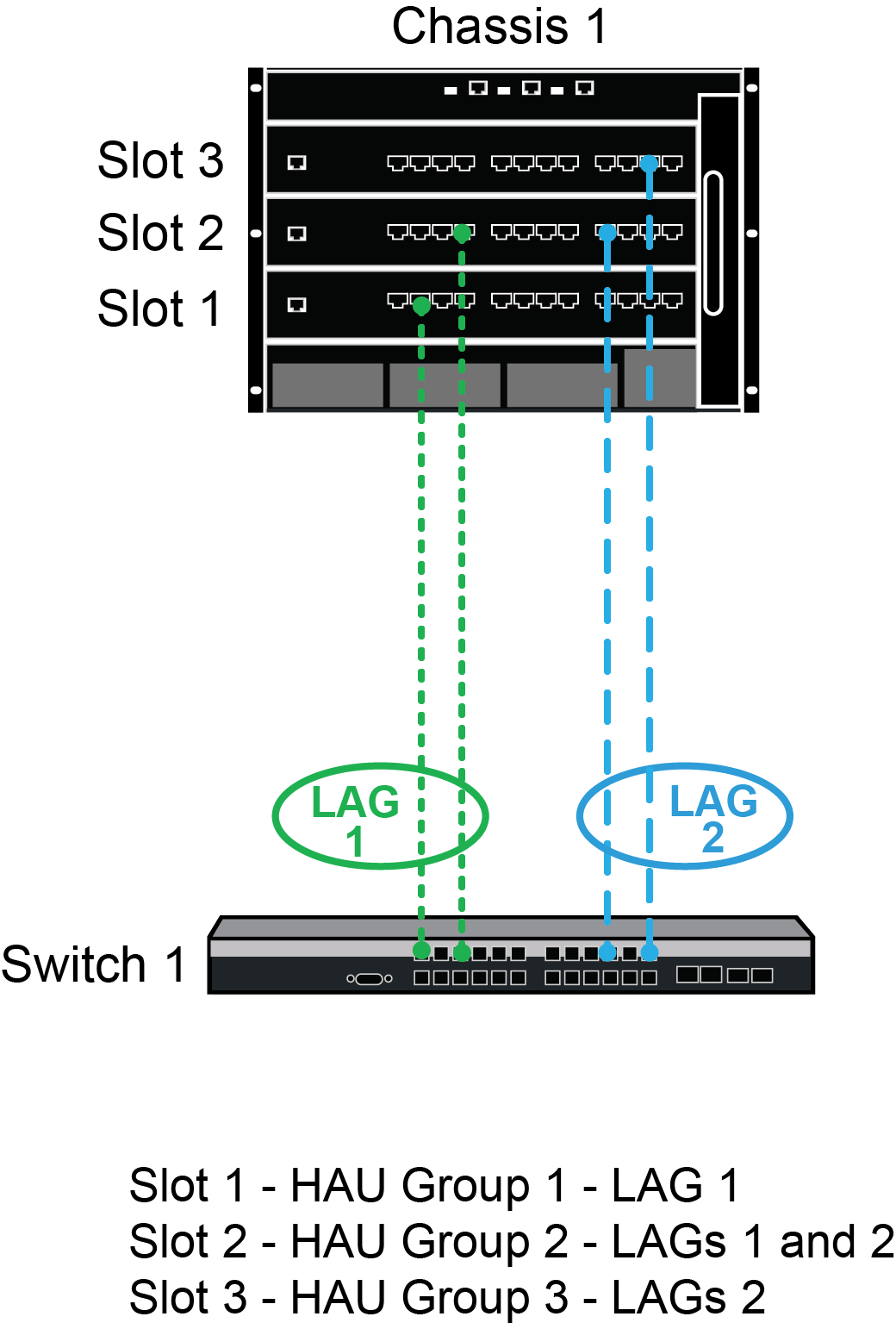
Note
The S- or 7100-Series HAU feature support is limited to an S-Series Virtual Switch Bond (VSB) or 7100-Series VSB stacking configuration. S- and K-Series Virtual Switch Bonding (VSB) Configuration for S-Series VSB configuration details and 7100-Series Virtual Switch Bonding (VSB) Stacking Configuration for 7100-Series VSB configuration details.High Availability Firmware Upgrade (HAU) is an S- and 7100-Series feature that provides for a rolling firmware upgrade for maintenance releases that are HAU compatible with the current system firmware.
There are two methods for loading a system firmware image:
Using the standard upgrade method, the image is loaded automatically after the system has been reset.
In the case of the S-Series device, the standard method takes the system out of service for the duration of the firmware upgrade. Using the HAU method, all populated system slots are assigned to HAU groups. The firmware upgrade takes place one HAU group at a time with all modules belonging to HAU groups not currently being upgraded remaining operational. As each HAU group completes its upgrade, a mix of slots running the original firmware and slots running the upgraded firmware are simultaneously operating on the device.
In the case of the 7100-Series device, using the HAU method, each 7100-Series chassis in the VSB configuration is assigned to an unique HAU group. The chassis not belonging to the HAU group currently being upgraded remains operational. After the first chassis completes its upgrade, the second chassis in the VSB configuration begins its upgrade. Whether the upgrade procedure uses the standard or HAU method, during the upgrade, one of the 7100-Series chassis is not operational.
To avoid potential feature conflicts between multiple firmware versions, the HAU firmware upgrade feature is limited to maintenance firmware upgrades and will not be available when upgrading to major feature releases.
System High Availability Firmware Upgrade Overview displays an example of a default HAU configuration using S-Series devices. Chassis 1 is being firmware upgraded. In a default HAU configuration, each slot belongs to a separate HAU group:
There are two LAGs configured between Switch 1 and Chassis 1. both LAGs are distributed between two Chassis 1 HAU groups. LAG 1 is configured on Slots 1 and 2. LAG 2 is configured on Slots 2 and 3. As each HAU group upgrades, packets for both LAGs continue to forward over connections to non-upgrading HAU groups.

HAU groups can be administratively configured for multiple slots. All slots belonging to the updating HAU group are upgraded simultaneously. Configuring multiple slots to an HAU group shortens the total amount of time required for the system upgrade.
As presented in System High Availability Firmware Upgrade Overview, all LAGs on the device must be associated with multiple HAU groups to assure that packets will continue to forward on an HAU group that is not updating.
A number of switch and routing applications require a period of time after the completion of a firmware upgrade to become fully operational. During this period, some resources associated with the just completed HAU group will not be available. By default a 5 second delay takes place between the completion of an HAU group upgrade and the reset of the next HAU group.
When specifying the image to use when booting the system, you can optionally specify whether a standard or high availability system upgrade should be performed.
If no system boot method is specified when setting the system boot image, there are three configurable HAU default modes that determine upgrade behavior:
You can not halt a high availability upgrade once it has begun, but you can force all remaining HAU groups that have not yet been upgraded to immediately upgrade. See Forcing Early Completion of a Running HAU for details.

 Print
this page
Print
this page Email this topic
Email this topic Feedback
Feedback